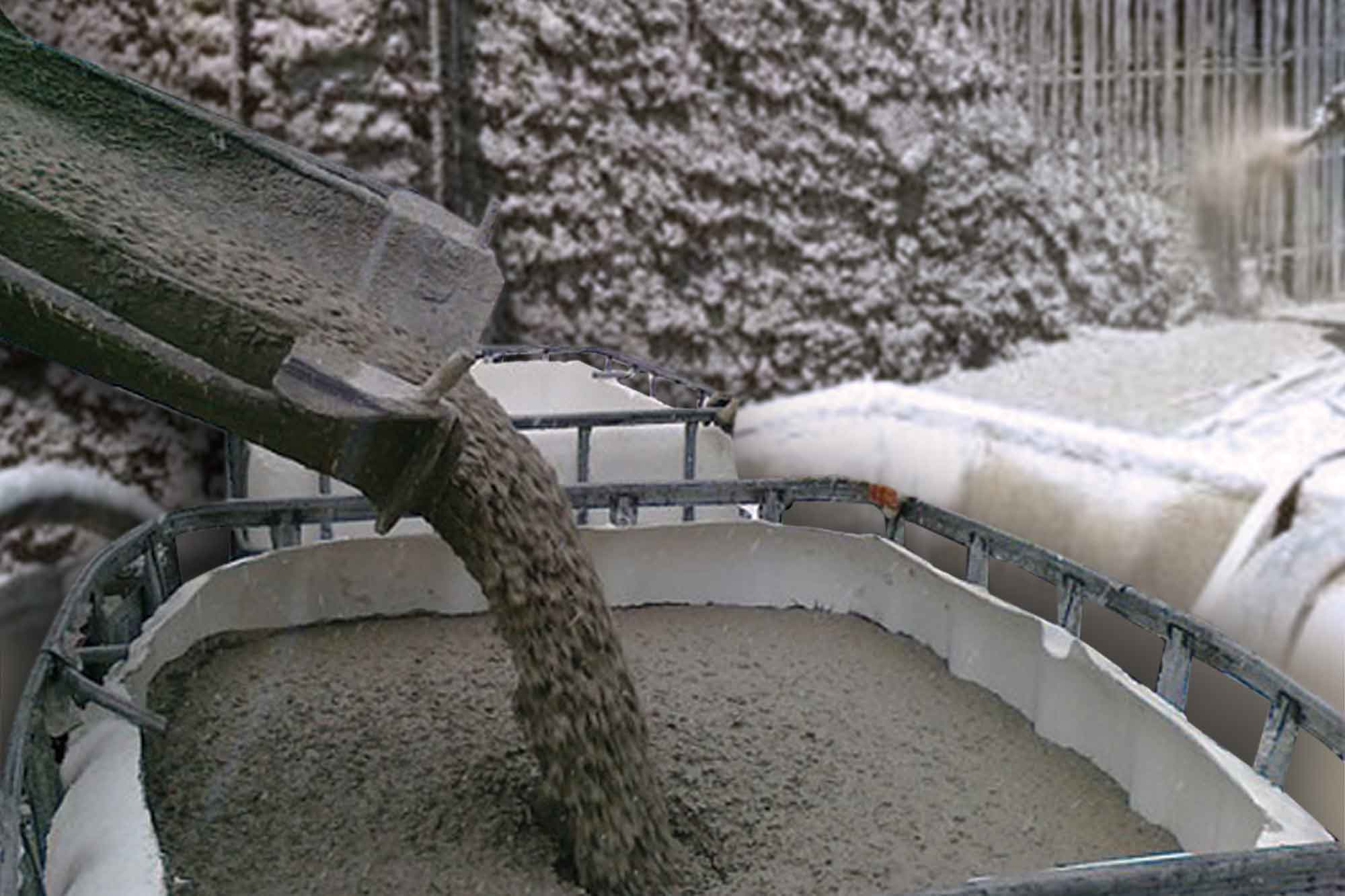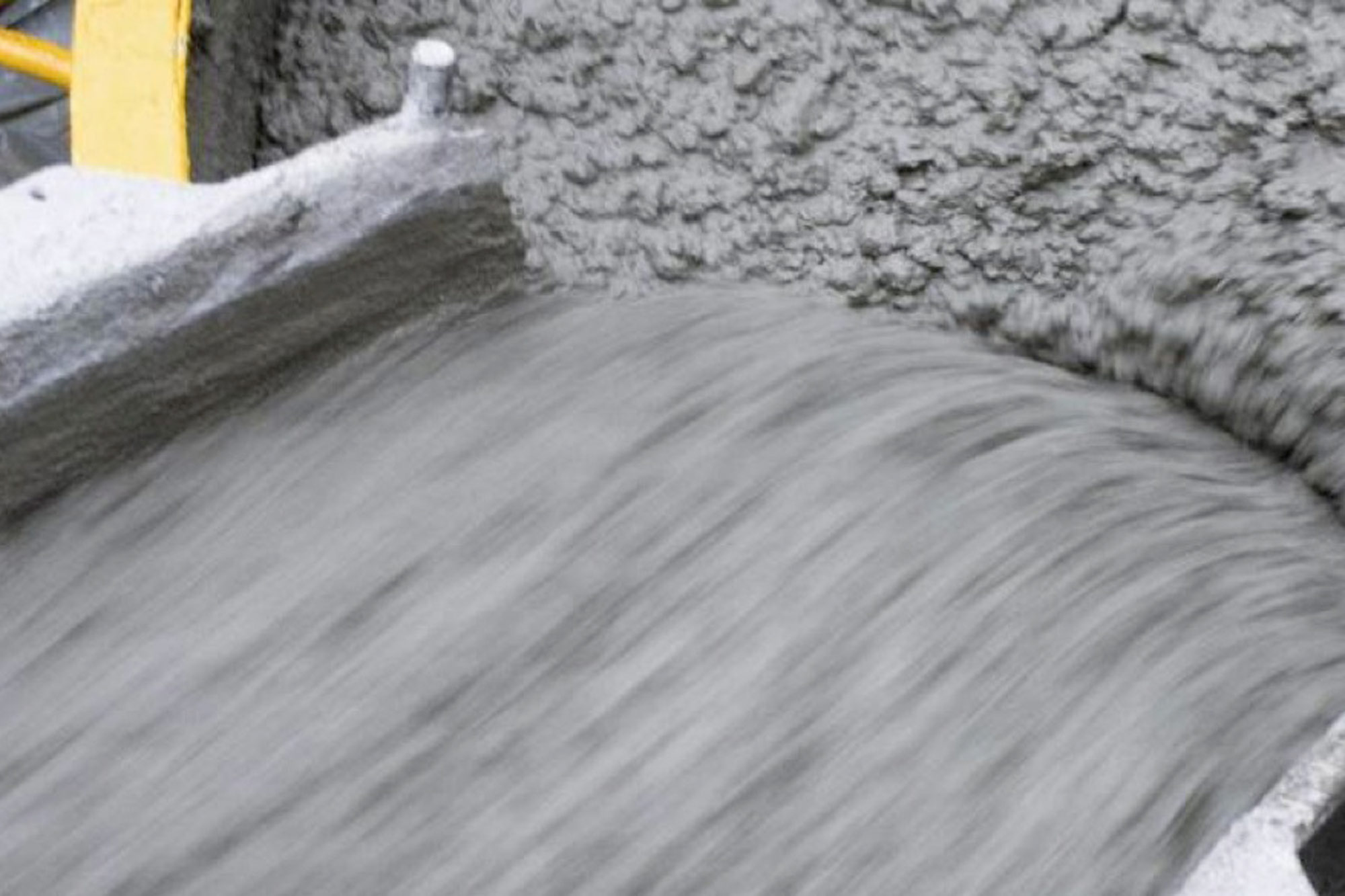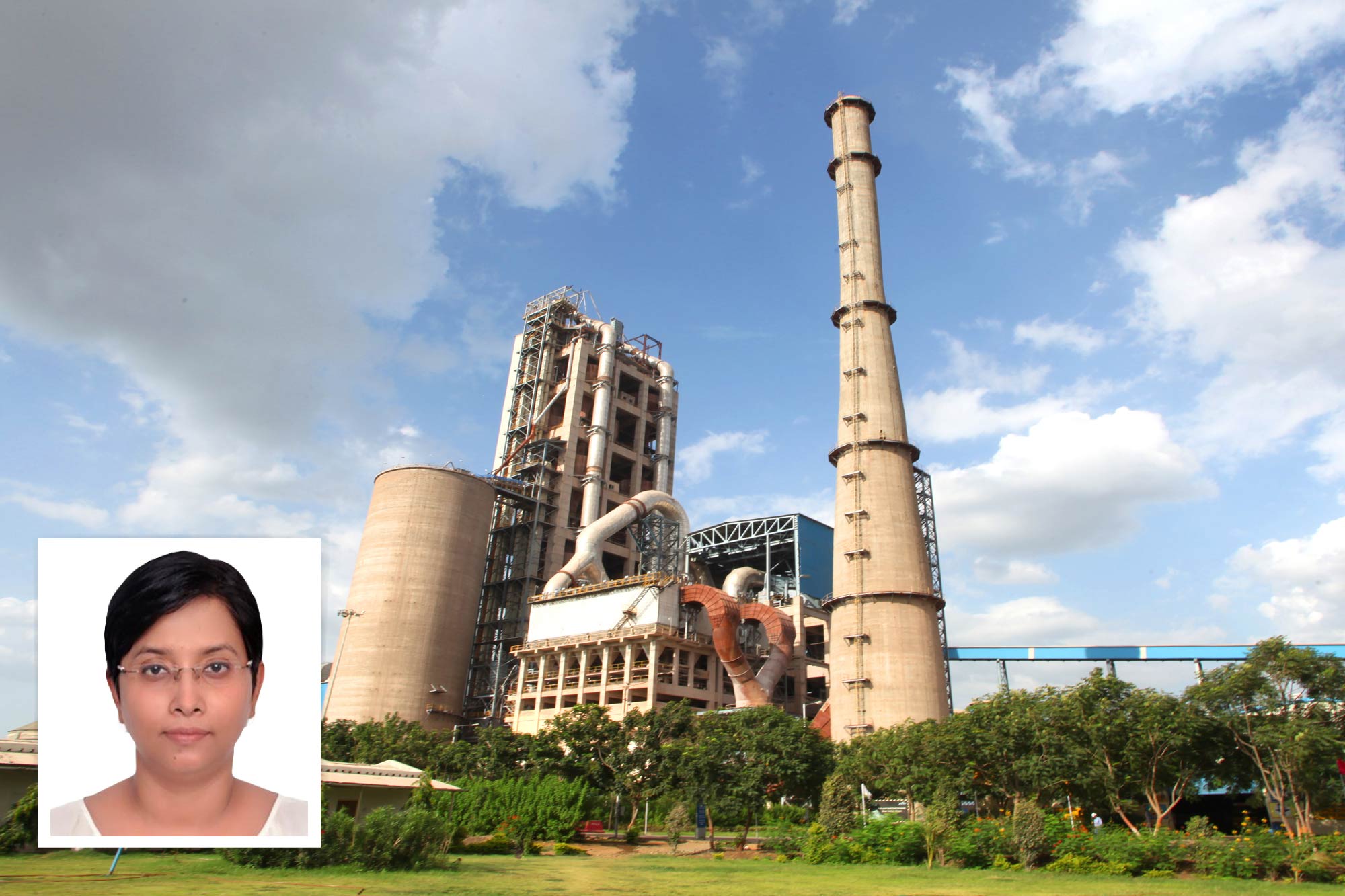Strengthening concrete
By Edit Team | July 22, 2017 5:58 am SHARE

Since the coming of skyscrapers and advanced development in infrastructures, stronger concrete has become prerequisite. Featuring some tips to make concrete even stronger.
The general misconception is that the more cement you have, the stronger is your concrete. However, more cement also brings with it too much heat generated from hydration which causes cracks. The less water you have, the more the strength. The more workable the concrete is, the better is the strength. Here we present you some of the tips on how to make concrete even stronger:
Ensure complete curing of the concrete
Dr. S. K. Manjrekar, Chairman and Managing Director, Sunanda Speciality Coatings Pvt Ltd share his opinion by stating strength of concrete can be increased by numerous methods are as follows:
• Using cement of a higher grade. Higher the grade, higher is the surface area of the cement, and hence more surface of the cement particle is available for hydration.
• Using a low water to cement ratio (W/C). Lower the W/C, higher is the strength. (If reduction of water is not possible due to issues with work ability, super plasticisers should be added to reduce the amount of water used).
• Using well graded angular aggregates. (stronger the coarse aggregate, better is the strength).
• Proper compaction.
• Curing. It also plays an important role in the strength gain of concrete.
To have all these things in one concrete Manjrekar suggests, “We have to deal with their negatives. Like for example, using a low water-cement ratio will generally give a strong concrete but will also make your concrete very hash and unworkable. Hence incorporation of additives like; plasticisers and air entrainers, and also blending the aggregate sizes so that they smoothly interlock and slide over each other to create a workable concrete has to be ensured.”
Manjrekar further states, strength of concrete also depends upon the following factors:
Age of cement: With age, the strength of cement decreases due to more moisture absorption from the atmosphere. The quality of cement also depends upon the storage conditions of the cement and hence the strength of concrete is also dependent on the storage conditions.
Water-cement ratio: With increase in water-cement ratio, the strength of concrete decreases, which is as depicted below:-
Degree of compaction: Strength of concrete also depends on the degree of compaction as improper compaction will lead to the presence of air voids in the concrete which will certainly reduce its strength. It has been observed that if there is 5 per cent void, strength of concrete decreases by as much as 30 per cent.
Mixing time: Strength of concrete increases with increase in mixing time up to 2 minutes, beyond which no significant increase in the strength is observed. This becomes much clearer with the following figure.
Type and size of the aggregate: Degree of packing is the main factor to be considered here. Greater the degree of packing, lesser is the void content and more is the strength.
Manjrekar affirms, “In order to increase the strength of the concrete, ensure proper proportioning of aggregates, having good water cement ratio by adding additives, use fresh cement and ensure complete curing of the concrete.”
Concrete additives
Explaining the efficiency of concrete, Sunny Surlaker, Head Admixture Division, MC-Bauchemie (India) Pvt Ltd, said, “To improve the efficiency of concrete in terms of improved mechanical strength, constructability, excellent durability, reduced maintenance and time, the best options lie in terms of concrete additives. Our product Centrilit NC, offers these properties into the concrete.”
Centrilit NC (nano-crystalliser) is a pozzolanic concrete additive based on amorphous aluminosilicate. It consists of a synthetically manufactured material, not an industrial by-product. Apart from a high uniformity a long-term availability is also ensured. Centrilit NC is available as a fine powder. It can be mixed fast into the concrete.
Centrilit NC – Essential for the durability of the concrete
Surlaker informs, “Centrilit NC, when added to concrete as an additive, adds to the durability of the concrete. The chemical and water resistance of concrete is improved due to the denser matrix, ITZ improvement and reduction of free lime (Portlandite) in the concrete. Centrilit NC provides increased resistance to Alkali-Silica Reaction (ASR), better resistance to chloride penetration, and improved sulphate resistance of tested mixes. There is also a significant reduction of micro-crack formation, which makes it particularly suitable for the production of tunnelling concrete or precast segments.”
In brief, Centrilit NC provides the following benefits when used in concrete:
• Provides excellent compressive and flexural strengths.
• Reduces chloride ingress, carbonation, and ASR.
• Enhanced workability and finishing of concrete.
• Reduced shrinkage, due to ‘particle packing’ making concrete denser.
• Improved colour by lightening the colour of concrete making it possible to tint concrete integrally.
High early strength, modulus of elasticity and abrasion resistance
Explaining his views on the properties required for stronger concrete Mohammad Zuhaib, Business Manager, RDC Concrete (India) Pvt Ltd, said, “The major properties required for stronger concrete is high early strength, high modulus of elasticity, high abrasion resistance, toughness and high impact resistance. For attaining great strength, special mixing, placing and curing practices play major role. Strength of aggregates and the adhesion between paste and aggregates are crucial factors so the aggregates must be free of detrimental coating of dust and clay. High range water reducers or superplasticisers are a necessity and help to obtain lowest water to cementitious material ratio.”
Zuhaib asserts, “For attaining high abrasion resistance, silica fumes and steel fibres are used. Other ways to increase strength is using carbon fibres, metal aggregates, using rebars in the middle of the concrete rather than at ends. While placing lowest possible temperature should be maintained and minimum temperature gradient must be maintained after placing. RDC concrete has been pioneer in providing solutions to high strength concrete requirements with products like FibreCrete, Procrete, Tempcrete etc, for last 24 years.”
‘Admixtures’ provides more durable concrete structure
Stronger concrete essentially means durable concrete. The ability of concrete to endure the harsh corrosive action of weather, water, chemical attacks and abrasion that is durable concrete. “Durability of concrete depends upon strength of concrete plus water tightness of all crucial sections such as joints, podiums, etc. This depends upon mix design, placing and curing of the concrete and also additives added to the concrete at time of mixing,” said Ajay Kudesia, Vice President Sales, Kryton Buildmat Co. Pvt Ltd.
A big addition and security blanket for the concrete to stop water and add durability to the concrete are admixtures added during mixing and placing of concrete. These admixtures work from within the concrete and add years to the structure, while making it strong and durable. Admixtures are added to provide a more durable concrete structure.
However, Kudesia affirms, “As mentioned, the most catastrophic element to the durability of concrete and further, the sustainability of a structure is the ingress of moisture. This is why making the concrete a waterproof barrier is a more prudent and effective way to ensure water ingress is halted.”
‘Admixtures’ plays an important role
Admixtures are those ingredients in concrete other than Portland cement, water, and aggregates that are added to the mixture immediately before or during mixing. Construction and building material sciences is a highly matured technology, world over. Sharing his views Hasan Rizvi, Sr. Vice President, STP Ltd, said, “Over decades, attempts have been made to obtain concrete with certain desired characteristics such as high compressive strength, high workability, and high performance and durability parameters to meet the requirement of complexity of modern structures. The properties commonly modified are the heat of hydration, accelerate or retard setting time, workability, water reduction, dispersion and air-entrainment, impermeability and durability factors.”
Advantages of various types of admixtures:
• Shortens the setting time of cement and therefore increases the rate of gain of strength.
• Improves workability, cohesion and extends setting time, provides protection against delays and stoppages and facilitates keeping workable concrete for extended period
• In the large construction, good workability of the concrete throughout the placing period and prevention of cold joints is ensured by adding retarders in the concrete.
• Enables earlier release from precast moulds thus speeding guidelines on use of admixtures in concrete production.
• Reduces segregation and increase density and compressive strength.
• Reduces water requirements, bleeding, shrinkage and time required for initial set.
Rizvi claims, “Admixtures play an important role in today’s concreting to get durable concrete structures.”
Depending on the degree of effectiveness of water reduction, the plasticisers have been categorised in two groups which are:
• Normal plasticisers capable of reducing water up to 10 per cent.
• Super plasticisers which are capable of reducing water 15 to 20 per cent.
Water being the major constituent
Puneet Kakroo, Business Head, Fibrex Construction Chemicals Pvt Ltd, said “Water being the major constituent, carries chemical contaminants into the concrete, which can corrode the steel reinforcement.”
A concrete mix design suitable for the service conditions that the concrete will be exposed, is the first durability criteria. The amount of water specified as per strength and exposure conditions should be strictly adhered to. Any additional water will lower strength and increase permeability. A concrete mix design depends on climatic conditions, placing, distance, structure, strength, raw materials available etc.
Concrete chemicals (admixtures) and applications
Admixtures are natural or manufactured chemicals other than cement, aggregate and water that are added to concrete either before or during its mixing to alter its properties, such as workability, curing temperature range, set time or colour. Some admixtures have been in use for a very long time in concrete construction, such as calcium chloride to provide a cold-weather setting concrete. As workability, curing temperature range, set time or colour. Some admixtures have been in use for a very long time in concrete construction, such as calcium chloride to provide a cold-weather setting concrete.
Admixtures can be classified into the following five major categories:
• Retarding admixtures
• Accelerating admixtures
• Super plasticisers
• Water reducing admixtures
• Air-entraining admixtures
Kakroo adds, “Admixtures are used to give special properties to fresh or hardened concrete. They enhance the durability or workability or strength characteristics of a given concrete mixture. Admixtures are used to overcome difficult construction situations, such as hot or cold weather placements, pumping requirements, early strength requirements, or very low water-cement ratio specifications.”
Cookie Consent
We use cookies to personalize your experience. By continuing to visit this website you agree to our Terms & Conditions, Privacy Policy and Cookie Policy.




















